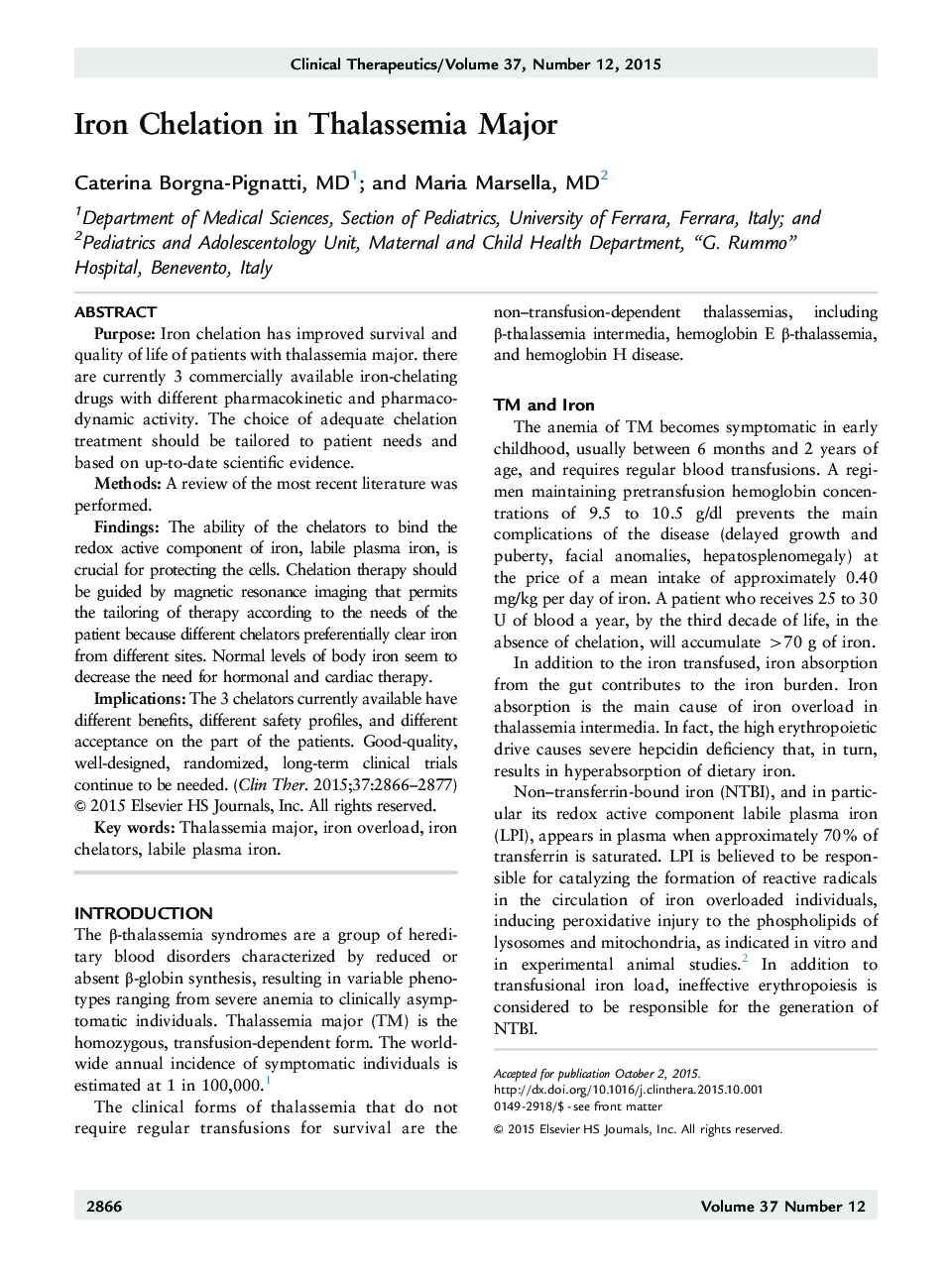| Article ID | Journal | Published Year | Pages | File Type |
|---|---|---|---|---|
| 5824729 | Clinical Therapeutics | 2015 | 12 Pages |
PurposeIron chelation has improved survival and quality of life of patients with thalassemia major. there are currently 3 commercially available iron-chelating drugs with different pharmacokinetic and pharmacodynamic activity. The choice of adequate chelation treatment should be tailored to patient needs and based on up-to-date scientific evidence.MethodsA review of the most recent literature was performed.FindingsThe ability of the chelators to bind the redox active component of iron, labile plasma iron, is crucial for protecting the cells. Chelation therapy should be guided by magnetic resonance imaging that permits the tailoring of therapy according to the needs of the patient because different chelators preferentially clear iron from different sites. Normal levels of body iron seem to decrease the need for hormonal and cardiac therapy.ImplicationsThe 3 chelators currently available have different benefits, different safety profiles, and different acceptance on the part of the patients. Good-quality, well-designed, randomized, long-term clinical trials continue to be needed.
